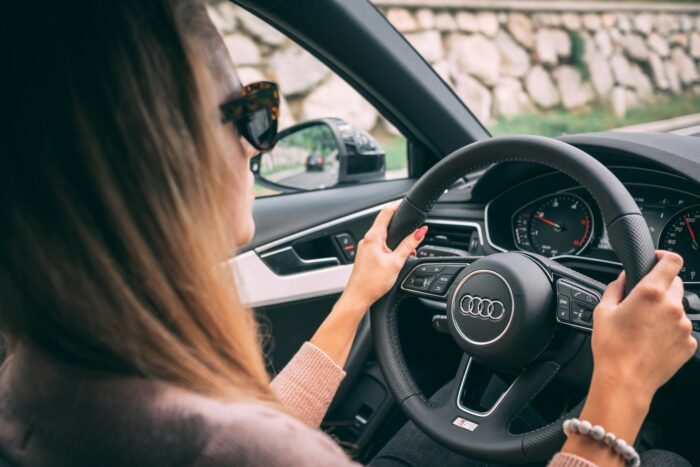Understanding what to do after a car accident can mean the difference between an uncomplicated recovery and expensive complications. Sadly, most drivers make essential mistakes in the initial panicky moments after an accident, putting their finances and safety at risk.

Photo by Andraz Lazic
Your first priority at all times is to look for injuries regardless of how minor the accident. Secondly, having non-impacted moving vehicles moved off the road where it is safe to do so, followed by a call to the police to report the accident officially, are essential processes that ensure the safety of all individuals involved. Filing an insurance for a car accident heavily depends on accurate documentation, and that is the reason we recommend taking a few photos and gathering full information from the other party. But the majority of them overlook these steps, thus, facing challenges in filing claims.
Here, in this guidebook, we will walk you through the most common mistakes that people make after accidents and also provide you with step-by-step tips on how to protect yourself physically and financially during this traumatic experience.
Three common mistakes that people make after accidents
1. Not checking for injuries or ensuring safety
The moments immediately after a crash can be overwhelming. Your heart races, thoughts jumble, and panic sets in. Initially, understanding what to do after a car accident requires a clear head and systematic approach to avoid costly mistakes that can affect both your health and insurance claim.
Why staying calm matters
A few deep breaths are the most critical first step after an impact. Adrenaline typically masks pain, perhaps hiding severe injuries requiring immediate treatment. Furthermore, panic interferes with good sense and inhibits making rational safety and documentation decisions.
To regain your composure, count backwards from ten or go back to your breathing. This simple trick calms down your heart rate and clarifies your mind. A calm face also helps you communicate effectively with the people concerned and recall things clearly later on for your car accident insurance claim.
How to assess injuries quickly
Once you’ve collected yourself, systematically check for injuries:
- Start with a self-assessment: Look for visible injuries like cuts or bruises, then check for pain when moving your head, neck, limbs, and torso.
- Check your passengers: Assess everyone in your vehicle using the same approach.
- If safe, check occupants in other vehicles involved.
Watch for these warning signs requiring immediate medical attention:
- Abdominal or chest pain/tenderness
- Nausea, dizziness, or vomiting (especially with blood)
- Dark purple bruising (potential internal bleeding)
- Rapid heart rate, weakness, or lightheadedness
- Blood in urine or stool
For severe injuries, avoid moving the injured person unless absolutely necessary, as this could worsen their condition. Call 911 immediately if anyone shows these symptoms or appears unresponsive.
When to move your vehicle and when not to
After checking for injuries, you must decide whether to move your vehicle. This decision depends on several factors:
Move your vehicle if:
- It’s creating a traffic hazard and is drivable
- Everyone is unharmed or has only minor injuries
- The accident is minor and you can safely navigate to the shoulder or parking lot
Keep your vehicle in place if:
- Someone is seriously injured or trapped
- Moving might worsen someone’s injuries
- There’s a strong gasoline odor (potential fire hazard)
- Your car isn’t operational or has significant damage
- The accident appears to involve criminal activity
If you decide not to move your vehicle, turn on hazard lights and set up warning triangles or flares if available to alert other drivers. Remember, safety always comes first—both yours and that of others sharing the road.

Photo by Cristofer Maximilian
2. Skipping the police report
Many drivers mistakenly believe minor fender-benders don’t require police involvement. In reality, skipping this step can seriously complicate your recovery process and potentially leave you financially vulnerable.
Why calling emergency services is important even in minor accidents
Even with seemingly minor accidents, reporting to police gives an official, unbiased record of the incident. Without a police report, you’ll face significant challenges in your insurance claim, as you might struggle to prove who was at fault and your insurer could deny coverage altogether.
What to say (and not say) to officers
Once police arrive, stick to the following guidelines: first, provide your name, driver’s license, and registration as legally required. Then, when describing the accident, stick strictly to factual information, never admit fault or apologise (this can be interpreted as legal liability), avoid speculation about what might have caused the accident, and report any injuries, even minor ones. If you’re unsure about facts, it’s okay to reply “I don’t know” instead of making an educated guess. Keep in mind that assertions made to officers hold tremendous value in the following proceeding.
How to get a copy of the police report
Typically, officers provide a report number at the scene. Most departments offer multiple ways to obtain your report: online through the police department website, in-person at the station, or by mail with a written request. Many insurance companies will help obtain the report for you—nevertheless, it’s worth getting your own copy to review for accuracy.
3. Failing to document the scene properly
Proper documentation immediately after a collision creates a strong foundation for your car accident insurance claim. Rushing through this crucial step or overlooking important details can significantly weaken your position when seeking compensation.
Photos you should always take
Your smartphone makes documentation straightforward—just remember to capture these essentials:
- Vehicle damage close-ups from multiple angles showing all affected areas
- Wide-angle shots of the entire accident scene, including vehicle positions
- Road conditions including skid marks, debris, and weather factors
- Traffic signs and signals relevant to the accident
- Visible injuries if you or passengers have them
- Number plates of all vehicles involved
Taking photos immediately preserves evidence that may disappear quickly after the accident.
Information to collect from the other driver
In addition to photography, make sure you take the complete name, address, phone number, and e-mail of all parties involved. Take their driver’s license number, name of insurance company, policy number, and vehicle information (make, model, colour). Having all this information available makes it quicker to submit claims and also prevents the other party from altering their statement.
Why witness statements can be crucial
Witness testimony generally provides the most compelling evidence in disputed cases. The witnesses, unlike the parties, have unbiased opinions for which they have no financial interest. Their testimonies can prove your account, establish fault, and disprove misrepresentations by other parties.
If possible, get contact details from the witness to the accident. Get brief statements while memories are still fresh. Such objective statements prove helpful in case the other driver ever varies his/her account.
Avoiding blame talk at the scene
The words you speak at the accident scene can genuinely impact your claim. Attempt to avoid saying “I’m sorry,” “I didn’t see you,” or “It was my fault.” Those may be interpreted by insurance companies as admissions of liability. Otherwise, limit it to exchanging fact-based information and noting the scene. Let fault be decided by the evidence and investigation rather than by emotional, under-stress statements.
4. Delaying or mishandling the insurance claim
Even after leaving the accident scene, crucial steps remain that can affect your financial recovery. Filing your insurance claim properly and promptly stands among the most important actions in what to do after a car accident.
When to notify your insurer
Timing is crucial in accident reporting. Notification is normally done by the majority of insurance providers within 24-72 hours from the accident. Some policies even indicate that claims must be made “within a reasonable time,” while others have specific timeframes. To begin with, notify your insurance company even if you’re not to blame. Failure to report the accident might be a policy condition breach, with a potential denial to pay out. Next, determine whether you’re going to report via your company or the other driver’s, as either avenue is still available.
What information you’ll need to provide
When filing your claim, be prepared with:
- Basic accident details (date, time, location, weather conditions)
- Names and contact information for all involved parties
- Insurance policy numbers (yours and other drivers’)
- Photos of vehicle damage and the accident scene
- Copy of the police/accident report
- Vehicle information (make, model, colour)
Provide only essential information during initial contact. Avoid discussing fault or giving recorded statements without legal advice.
How delays can affect your car accident insurance
Procrastinating your claim submission can have serious repercussions. Insurance companies typically have about 30 days to investigate claims, although this varies by state. Subsequently, delays on your part shorten their effective investigation time.
Some insurers deliberately delay claims, hoping policyholders will accept lower settlements out of frustration. Furthermore, extended delays might cause you to miss your state’s statute of limitations, eliminating your ability to pursue compensation.
Understanding your policy coverage
Before filing, thoroughly review your coverage details. Many rejected claims stem from policyholders not understanding their coverage limitations. Although policy documents can be complex, comprehending exclusions, deductibles, and coverage limits helps set realistic expectations.
If you don’t currently have coverage or are considering switching providers, you can explore reliable car insurance options to ensure you’re protected before an accident happens. Your policy represents a binding contract between you and the insurer. Accordingly, understanding all terms and conditions enables you to navigate the claims process more effectively and prevents surprises when settlement offers arrive.
Conclusion
Handling the aftermath of a car crash is confusing, yet there are only a few errors to evade. Start by always checking for injuries. Your health is most important. Never neglect to call the police, even if damage seems slight, since they can give a report that is crucial for your claim. Adequately documenting the scene with witness reports and photos makes your case more solid, and notifying your insurer promptly protects your rights under your policy.
Time is of the essence. Delaying medical care can worsen injuries, and waiting too long to file a claim can reduce your chances for fair compensation. Acting quickly and smartly is your best protection, both physically and financially.
Accidents occur unexpectedly, but your response doesn’t have to. Stay calm and avoid these vital mistakes, and you’ll be through it like a professional. Treat this guide as your roadmap—because preparedness is the best response you can have following a crash.










